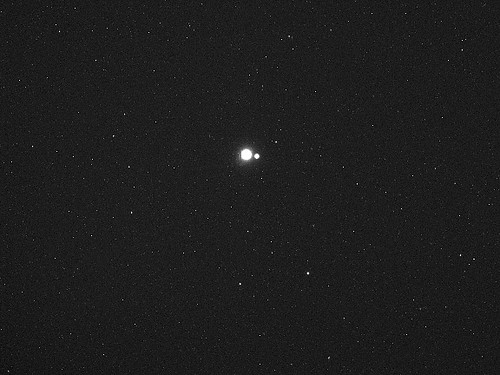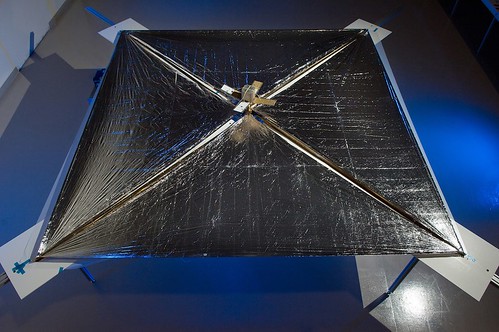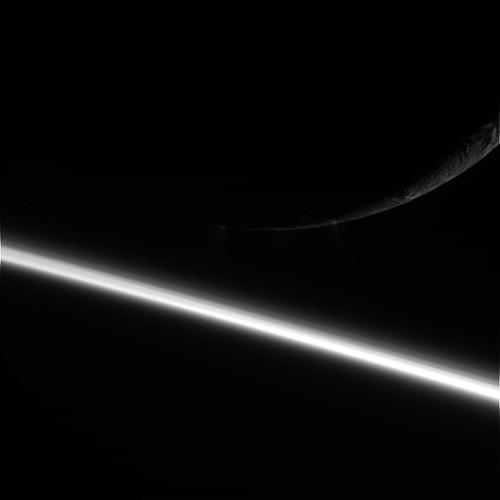Awesomeness Round-up – 8/23/10
- By Maggie Masetti
- August 23, 2010
- Comments Off on Awesomeness Round-up – 8/23/10
Do we have any science fiction fans out there? It seems like solar sails are a mainstay of spaceships in many books and movies (Avatar had a cool-looking ship with one). Are we one step closer to making this a reality? Meet NanoSail-D, which was designed and built by NASA. A solar sail works by capturing contantly streaming solar particles (photons). If you get enough of these particles, the sunlight will propel a vehicle much like wind would push a sailboat through water. Here’s an unfurled solar sail:
This cool SDO image shows a single sunspot dividing to become two!
This video from the launch of STS-124 isn’t new, but it’s been making the rounds recently because it’s really interesting! It’s shot from an unusual vantage – a camera was placed on one of Discovery’s solid rocket boosters, so you get to see the booster separation and free fall. Not very exciting until about two minutes in, but then it get to the good stuff.
Wonder what a NASA tweet-up at a shuttle launch is like? Here’s a blog entry that talks about one attendee’s experience.
Want to experience this yourself? You can register for a tweet-up around the November launch – registration starts August 24th!
Isn’t this Cassini image beautiful? At the top is a crescent Enceladus, which is rising over Saturn (at the bottom), the cloud tops of which are sunlit. This is a raw image and hasn’t been processed to clean it up. More about this image and other Cassini images.
This probably isn’t the first place you saw the news about the shrinking Moon reported. Still, it’s pretty cool, so we had to mention it. The Lunar Reconaissance Orbiter just discovered cliffs in the lunar crust that seem to indicate that the moon shrank in the recent past – well, geologically speaking. Furthermore, it might still be shrinking! When the moon formed, it was bombarded a lot by asteroids and meteor, which (along with radioactive elements decaying) made the moon hot. As it cooled, it shrank – this isn’t a new theory. What is new is the evidence of (relatively) recent tectonic activity related to the cooling and shrinking of the interior of the moon.
How recent? Well, less than a billion years. Or maybe as young as 100,000 years. (We told you it was on a geologic scale!) You can see scarps in this image that are the result of the moon shrinking and rupturing and creating faults in the thing crust.

Credit: NASA/Goddard/Arizona State University/Smithsonian
It’s not quite as good as LRO, but this iPhone 4 photo of the moon is cool!
The Mercury MESSENGER spacecraft took this image of the Earth and Moon in May of 2010 when MESSENGER was 114 million miles away from Earth. (FYI, Earth and the Sun are about 93 million miles apart).

Credit: NASA/Goddard/Arizona State University/Smithsonian
Back in the 1970s, NASA Ames conducted some studies to consider space colonies that could house about 10,000 people. They commissioned a variety of artistic renderings of these colonies. I love seeing what people in the past thought the future would look like! You can view these images in a variety of sizes at the NASA Ames Space Settlements website, and Boing Boing has collected all of them on a single page.






